5 Natural Anti-Inflammatory Treatments for Joint Pain
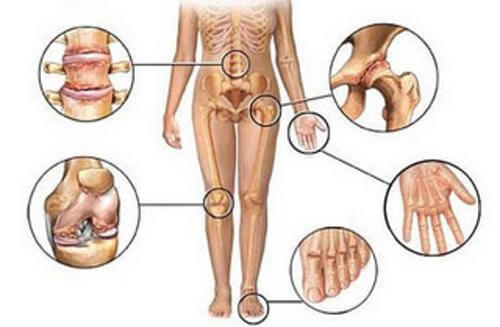

Written and verified by psychologist Valeria Sabater
Inflammation due to wear and tear in a knee joint or aches in the fingers and toes are common occurrences. We almost always wind up taking some kind of treatment for joint pain to alleviate the pain.
But did you know that there are excellent natural anti-inflammatory agents that work as an effective treatment for joint pain?
Obviously, you should always follow your doctor’s prescription first and foremost, but if you’re at home and feel the need to take the classic ibuprofen or another over-the-counter medication, try one of these natural anti-inflammatories first.
You’ll be amazed by how much relief you get!
1. Rosemary
Rosemary is a common aromatic and medicinal herb used in the Mediterranean diet. It lends a distinctive flavor to many dishes and is also used in numerous home remedies.
Did you know it also acts as a natural painkiller? Thanks to this, it’s excellent for alleviating all types of joint pain.
Its painkilling benefits are derived from its ursolic acid content. It’s excellent for fighting infections that occur in and around the cartilage of the hand and knee joints, without causing any negative side effects. Pay attention to how you should take advantage of it.
It’s an excellent treatment for joint pain.
Ingredients
- 200 grams of rosemary
- 2 cups of water (400 ml)
Preparation
All you need to do is make tea. Bring the water to a boil and add the sprigs of rosemary. Let them steep for 20 minutes, until it cools to room temperature. You can drink two cups of this infusion a day.
Read also: Three Natural Painkillers to Relieve Migraines
2. Horsetail grass
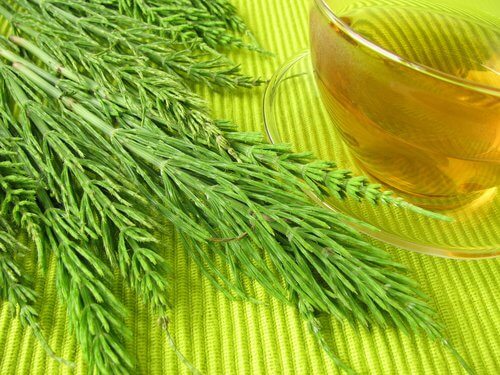
You can buy horsetail grass in natural food and wellness stores. The great thing about horsetail grass is that in addition to being one of the best natural anti-inflammatory agents. Tt also provides essential vitamins and minerals.
How should you take it? Just as a simple tea, two times a day. It’s that easy!
3. Turmeric
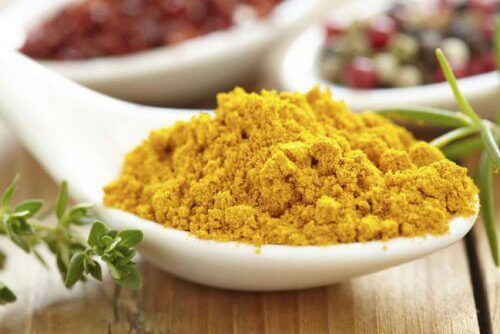
We talk a lot about turmeric on this blog. This herbal spice is native to Asia and lends an attractive hue to certain dishes, but it’s also excellent for treating joint pain. Don’t hesitate to try using turmeric before reaching for the ibuprofen when you feel pain.
Thanks to its anti-inflammatory, pain relieving, and antioxidant properties, turmeric helps fight any infection in the body while helping to repair injured tissues and eliminate toxins.
To benefit from turmeric, make a rich tea using the following recipe:
Ingredients
- 1 tablespoon of ground turmeric (20 grams)
- 3 cups water (750 ml)
- 3 tablespoons of honey (60 grams)
Preparation
Start by bringing the water to a boil. Add the tablespoon of turmeric. You’ll notice that the water immediately takes on an attractive yellow color. Let it boil for another 10 minutes before removing from heat.
Strain off the liquid and add three tablespoons of honey to sweeten your beverage.
You can drink this throughout the day to alleviate inflammation and it’s an effective treatment for joint pain.
4. Ginger
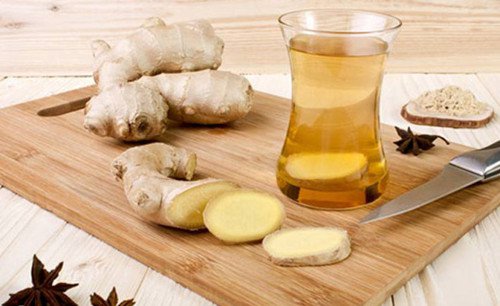
Read also: Yoga for Back Pain
You probably already knew ginger was going to turn up on this list. This medicinal root is possibly one of the best natural anti-inflammatory ingredients available, highly suitable for treating anything related to joint pain.
So on the days that you start to suffer from those aching joints, just prepare the following remedy.
Ingredients
- 200 grams of grated ginger root
- 2 cups of water (400 ml)
- 2 tablespoons of honey
Preparation
As in the previous recipes, you’ll make a tea with this herb. In this case, when the water comes to a boil, add the ginger and let it simmer for 20 minutes.
After that time, let your tea sit for 10 more minutes before straining off the liquid.
Now add 2 tablespoons of honey. As you can see, honey is an essential ingredient in these types of remedies thanks to their own natural properties, and they also help fight joint pain.
Remember to drink two cups of this tea during the day. It will bring you relief.
5. Flaxseed or linseed
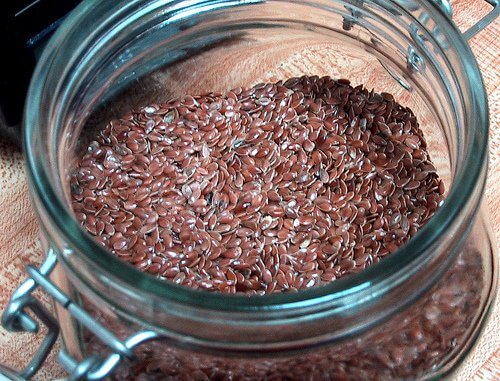
Flaxseed and linseed are readily available in specialty food stores. They’re inexpensive and both act as natural anti-inflammatory agents, but do you know why they’re suitable for treating joint pain?
- They are a natural source of Omega-3 fatty acids: this helps strengthen the body’s immune system and help fight any infections that are causing inflammation in the joints. It’s a good idea to try to obtain your Omega-3s from vegetable sources because those that are derived from animal fats can cause the opposite effect (i.e. more inflammation).
- How should you consume flaxseed or linseed? You’ll take two tablespoons (40 grams) per day. You can eat them by themselves, or add them to salads, but never overcook them, because they’ll lose a lot of the Omega-3s and you’ll also digest them incorrectly. Remember: eat them raw on a daily basis. Your body will adjust to the additional vitamin intake and help reduce the inflammation in your joints.
Always try to give natural anti-inflammatories a chance before reaching for the ibuprofen.
But also remember that you need to follow the recommendations of your doctor, first and foremost before choosing any treatment for joint pain.
All cited sources were thoroughly reviewed by our team to ensure their quality, reliability, currency, and validity. The bibliography of this article was considered reliable and of academic or scientific accuracy.
- Daily, J. W., Yang, M., & Park, S. (2016). Efficacy of Turmeric Extracts and Curcumin for Alleviating the Symptoms of Joint Arthritis: A Systematic Review and Meta-Analysis of Randomized Clinical Trials. Journal of Medicinal Food. https://doi.org/10.1089/jmf.2016.3705
This text is provided for informational purposes only and does not replace consultation with a professional. If in doubt, consult your specialist.








